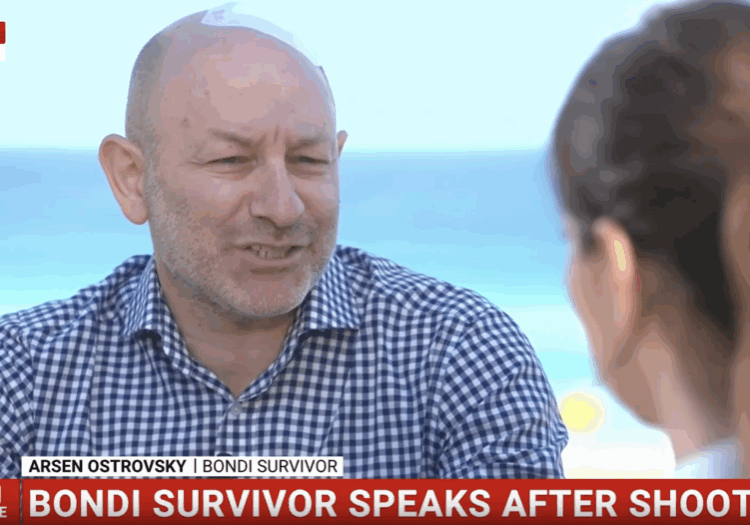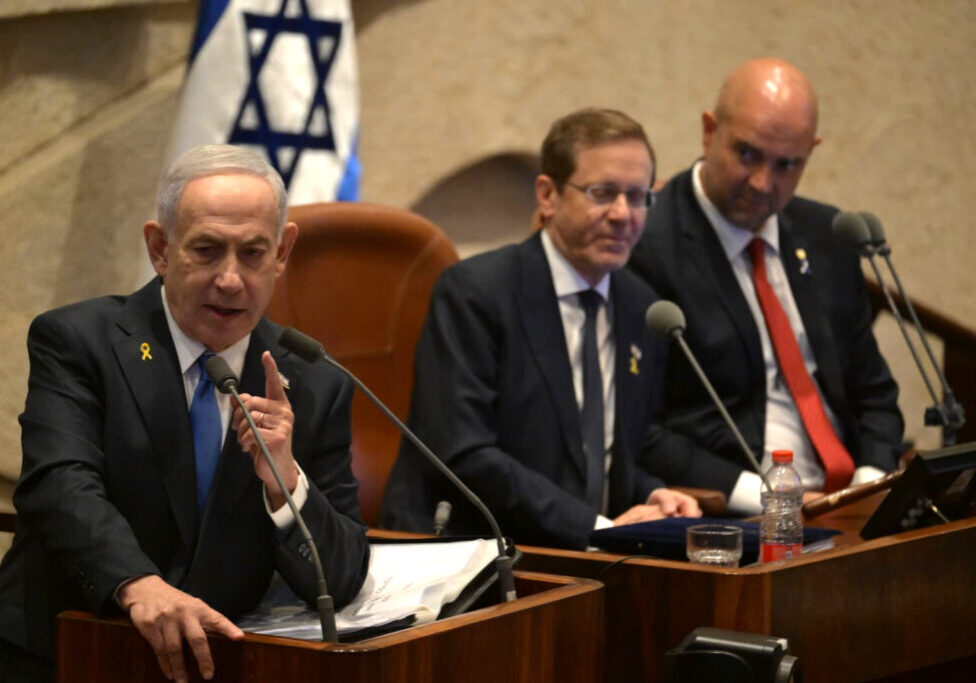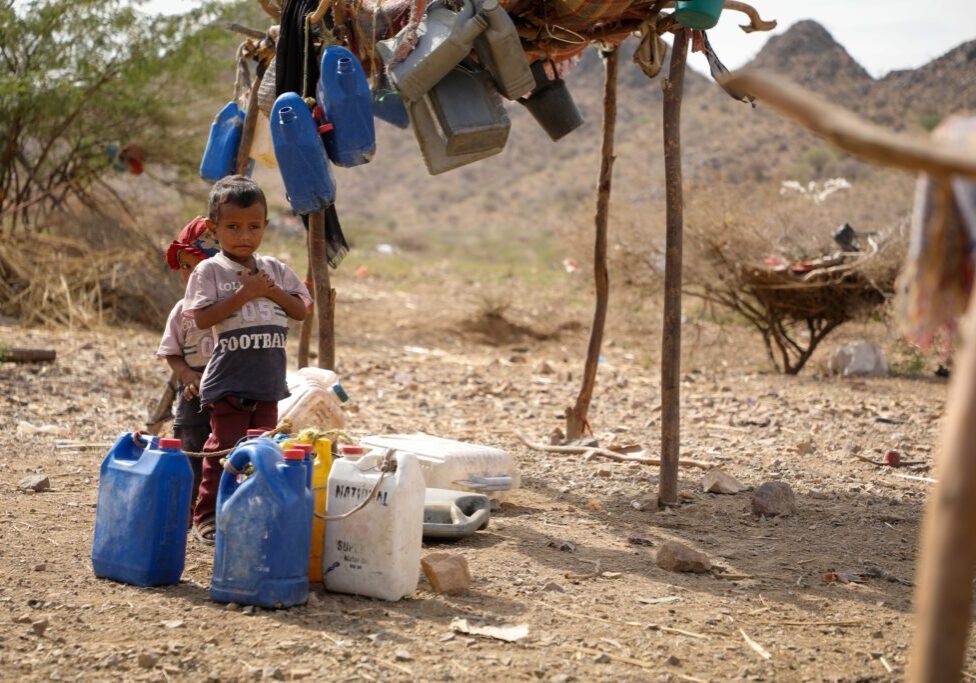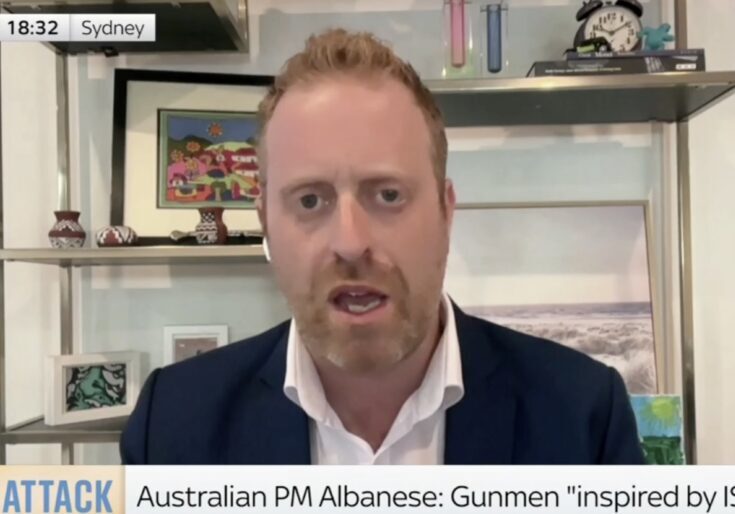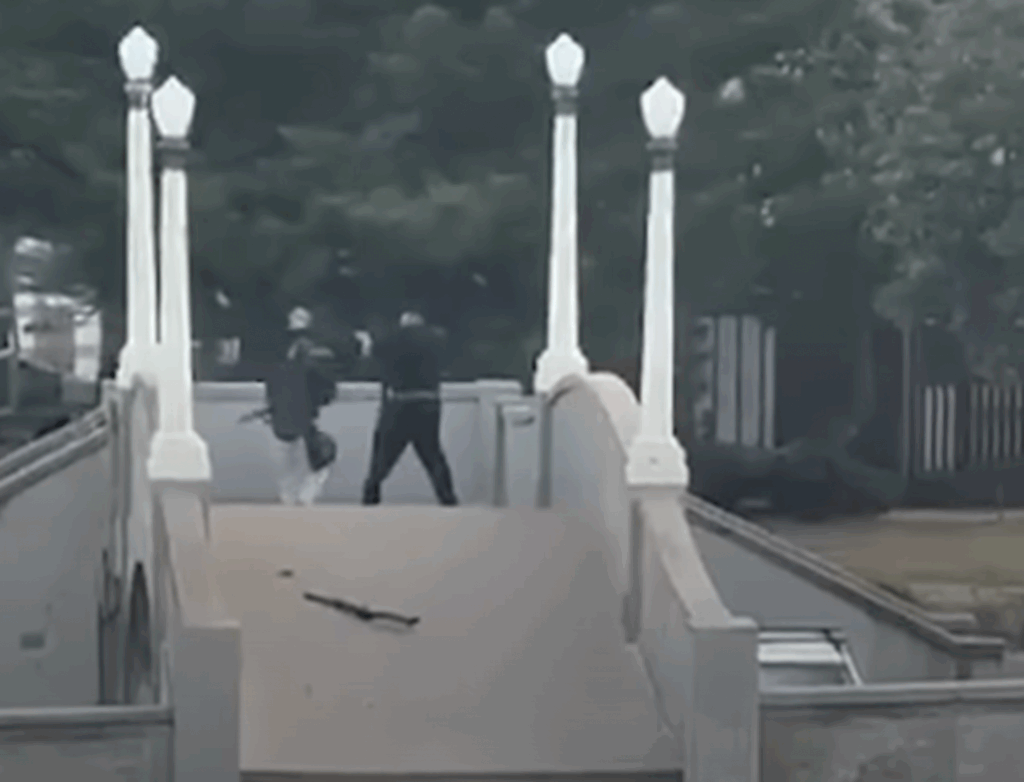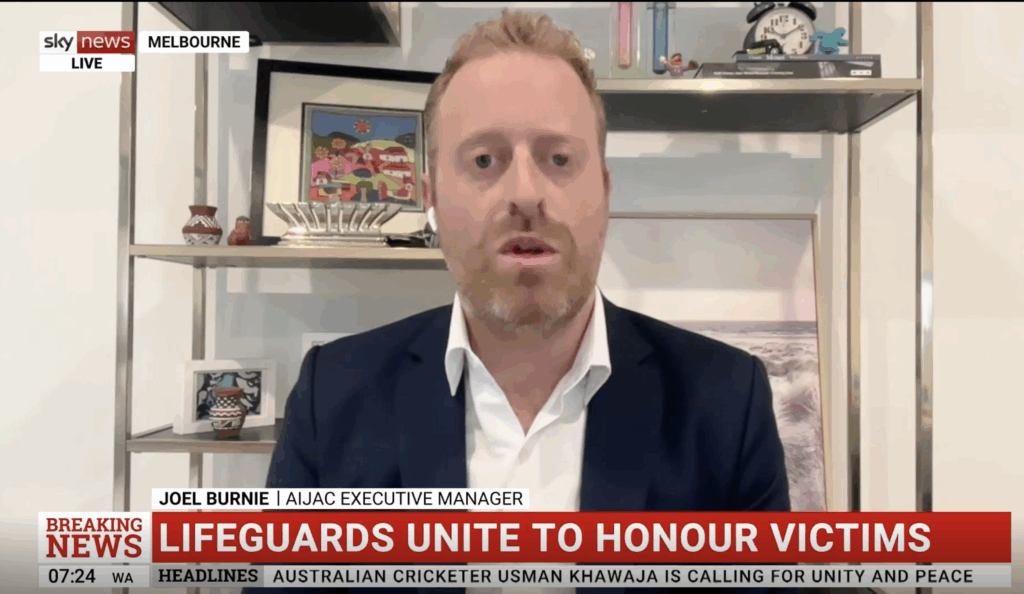FRESH AIR
Aid delivery and distribution in Gaza: Logistical and security bottlenecks
May 3, 2024 | Oved Lobel

On April 7, Israel suddenly announced it had withdrawn nearly all troops save one brigade from Gaza. Defence Minister Yoav Gallant announced shortly thereafter that Israel would “flood Gaza with aid,” including by increasing coordination with partners and agencies; allowing Ashdod port to receive aid shipments; and constructing a new crossing in the north of Gaza.
In addition, Israel has said it is establishing a new coordination centre to ensure nothing like the tragic strike against the World Central Kitchen aid convoy that took place on April 1 can occur again. It is also setting up a new security screening centre for trucks entering northern Gaza.
A third crossing, Zikim, is scheduled to be opened in the north, joining Erez and Gate 96, to enable larger numbers of trucks to enter the worst-hit areas of Gaza.
This will be on top of already facilitating near-daily aid airdrops to northern Gaza by multiple countries and coordinating a maritime corridor for aid delivery, including a floating pier being built by the US expected to be up and running shortly. The modalities of aid distribution from the pier are still being worked out, but the US claims it will technically be able to deliver more than two million meals per day. At the time of writing, the pier was fully constructed, with a causeway still in the process of being built.
Already, record amounts of aid are entering Gaza, substantially more than before the war began on October 7. Moreover, Israel’s Coordination of Government Activities in the Territories (COGAT) says at least 26 bakeries have reopened and are operating throughout Gaza “providing close to 5 million breads, rolls, and pita breads daily.” In mid-April, White House National Security Council spokesman John Kirby told MSNBC, “The aid has increased and quite dramatically in just the last few days.”
Where are the bottlenecks?
The plan, according to Gallant, is to get up to at least 500 aid trucks entering per day. The latest update from COGAT shows a daily average of 271 trucks, 198 of which are purely food aid trucks, entering in April. In March, the daily averages were 191 and 139 respectively. On April 30, more than 100 food aid trucks entered northern Gaza, the area with the most concentrated food insecurity.
Yet bottlenecks remain, assessments of increases in aid delivery vastly differ between Israel and the UN and there is still very serious food insecurity in Gaza. In some isolated areas, famine is imminent or potentially already occurring, as Samantha Powers, United States Agency for International Development (USAID) chief, recently testified.
According to COGAT, the fault lies primarily with the UN and other aid agencies. COGAT claims that Israel has “the capacity to inspect more humanitarian aid than the international organizations can distribute.” Israel has not technically placed any limit on the amount of aid able to enter Gaza, and the IDF also says it approves almost 99% of the Gaza-bound trucks it inspects.
COGAT recently posted a photo of vast stockpiles of aid on X/Twitter with the caption, “This is what the content of 700 aid trucks looks like. It is waiting on the Gazan side of Kerem Shalom to be picked up by @UN agencies. We scaled up our capabilities. All the UN did was make up excuses. Aid needs to be collected and delivered. The UN needs to do its job.”
On April 30, for instance, COGAT claimed that of the more than 300 aid trucks the UN received in all of Gaza that day, only the contents of 166 were distributed, 63 of which carried food aid.
In March, Colonel Moshe Tetro, head of the IDF’s Coordination and Liaison Administration, which coordinates aid deliveries, asserted that aid agency logistical issues were to blame, saying “the UN and other international organisations have some bottlenecks regarding the amount of trucks, amount of truck drivers, manpower, working hours…”
US officials also said one of the primary bottlenecks is the lack of trucks and drivers inside Gaza. Former US humanitarian envoy for Gaza David Satterfield recently stated that the lack of trucks in Gaza to deal with the increased aid delivery is the biggest obstacle to distribution right now:
That flooding [of aid into Gaza], that additional assistance has brought with it its own logistical challenges. The problem is not getting assistance into Gaza; it’s getting it distributed within Gaza. And there the logistical constraints are the lack of sufficient trucks in possession of the UN, something that the UN and we have been working on assiduously over these last weeks, to enable a greater logistical capacity to distribute, pick up aid, and move it.
Part of this shortfall in drivers and trucks, aside from temporary dips during Muslim religious holidays, is due to fear of coming under fire, getting bombed or getting attacked by criminal elements or swarmed by civilians. Nearly 250 aid workers have been killed in Gaza, according to UN Secretary-General António Guterres, with Satterfield calling it “one of the worst [conflicts] in recent memory in terms of how many humanitarian workers…have been killed since October.”
Satterfield stressed the need to improve “deconfliction and coordination” between the IDF and humanitarian workers to improve the situation:
We have worked intensively…on setting up a mechanism that works in real time between humanitarian actors on the ground, between IDF personnel at checkpoints, at contact points on the ground, and appropriate levels within the IDF structure to enable that efficient, effective, and safe movement of humanitarians, their staff, and the convoys containing assistance. Progress is being made, but more progress still needs to be done to assure that this is in train. To make it work, humanitarian actors need effective communications…We’re pleased that progress has been made on availability of appropriate communications systems for humanitarian workers.
Counting trucks differently
The UN and COGAT also count aid trucks differently, leading to differing assessments of how much aid and how many trucks are actually being delivered.
COGAT recently claimed, “The UN’s incorrect numbers are a result of their flawed counting method. Rather than counting the actual number of trucks that enter the Gaza Strip, in an attempt to conceal their logistical distribution difficulties, they only count the trucks that they have picked up from the Gazan side of the border.”
Jens Laerke, the spokesperson for the UN’s Office for the Coordination of Humanitarian Affairs (OCHA), which recently specified the “array of access restrictions and denials imposed by Israeli authorities” causing some of the distribution issues, remarked:
COGAT counts what they screen and send across the border. We count trucks that arrive in our warehouses. Trucks that go in, screened by COGAT, are typically only half full. That is a requirement that they have put in place for screening purposes. When we count the trucks on the other side, when they have been reloaded, they are full.
Miller explained the discrepancy to reporters as follows:
With respect to this dispute over trucks, part of it is counting different things, and not just counting in a different way, but there are some deliveries that happen that are commercial deliveries that the UN doesn’t count because they’re not part of the relief efforts that the UN monitors. So two things happen. Number one, there are trucks that come in through Rafah and through Kerem Shalom that then are offloaded at Rafah and Kerem Shalom and loaded onto UN trucks. And UN uses different size trucks, so the UN counts their trucks, not the number of trucks that are coming in. It is a different way to actually measure the number of trucks…The UN number itself doesn’t capture the entire daily volume, because there are commercial trucks that are coming in, in some cases coming in directly through the north, through Erez, or are coming in through the 96 gate crossing that they opened, or are coming in through the south and driving up – and are driving up internal roads. And those aren’t counted, to my understanding, in the UN numbers, because they’re not being delivered through any of the UN agencies…So the UN number does not count the total amount of delivery that goes in.
Aid distribution in any warzone is dangerous and complex
COGAT, the UN and international aid agencies have long been trading accusations about who is responsible for aid shortages and bottlenecks. The answer is that no single party is to blame: aid distribution in any warzone, and particularly in Gaza, is incredibly dangerous and complex, and Israel has to balance military and security priorities with humanitarian aid needs.
An investigation in late March by Reuters and Times of Israel identified myriad bureaucratic, security and logistical issues causing delivery as well as distribution difficulties at every step of the process.
Laerke claimed that aid pileups on the Gaza side of the border, for instance, were partially due to the fact that:
Egyptian drivers and trucks can never be in the same area at the same time as Palestinian drivers and trucks. That means there is not a smooth handover. First, everything has to come in, has to be offloaded, everybody has to go out, before a new set of trucks from inside Gaza with Palestinian plates, with vetted Palestinian drivers, can go in and pick it up.
The OCHA reported in May that, during April, only 55% of aid missions were facilitated by Israel in northern Gaza, with the others impeded, denied or cancelled due to logistical constraints, while in the south the number of impeded, denied or cancelled aid missions was 20%.
Another issue identified by the OCHA with distribution inside Gaza was that “The majority of humanitarian convoys travelling northward must navigate high security risk areas and a single Israeli checkpoint on the Salah Ad Din Road, leading to increased road congestion, substantial delays and exacerbated logistical constraints.”
Satterfield also noted that increased aid had led to congestion:
There are two crossing points, two checkpoints, to and from north Gaza. Those two checkpoints – one on the coastal road, one on an inland road called Salah al-Din — are now heavily congested with truck movements. That wasn’t a problem before. It’s a problem now, and it needs to be sorted out so assistance can be moved safely and efficiently up, empty trucks brought south, so the cycle can begin again. We’re in close touch with the Government of Israel, with Israeli authorities on how best to expediate, along with the UN, these movements.
Despite the new Israeli measures and dramatic increase in aid delivery and improved mechanisms, Guterres told the Security Council on April 18:
Israel recently made a number of commitments to improve aid delivery – and there have been some examples of limited progress… The operating hours of Kerem Shalom and Nitsana crossings have been expanded from the Israeli side. But security concerns mean the hours could not be expanded to the same extent on the Gaza side…But apparent progress in one area is often cancelled out by delays and restrictions elsewhere. For example, although the Israeli authorities have cleared more aid convoys, those clearances are often granted when it is too late in the day to make deliveries and return safely. One can say that our personnel cannot operate in darkness in a war zone littered with unexploded ordnance…During the week of 6-12 April, Israel denied more than 40 percent of UN requests that required passing through Israeli checkpoints…”
However, Guterres more recently said that “incremental progress” had been made to avert famine.
A further difficulty in aid delivery and distribution relates to the fact that the “backbone” of international aid operations in Gaza, as Guterres called the United Nations Relief and Works Agency for Palestine Refugees in the Near East (UNRWA), has been credibly linked directly to terrorism. Twelve of its employees participated directly in the October 7 attack, leading to mostly temporary aid cuts by international donors.
Israel claims a further 30 facilitated or assisted in the attack and hostage-taking and nearly 1,500 of UNRWA’s 13,000 staff are members of Hamas or Palestinian Islamic Jihad, of which more than 200 are fighters. As a result, Israel has reportedly imposed restrictions on the organisation with a view to gradually transferring its responsibilities to others and phasing out its activities in Gaza after the war.
Aid Theft
The reality of aid distribution in all warzones is that convoys are accidentally or purposely attacked or obstructed by warring forces and much or most of the aid is stolen by armed actors, looted by civilians or ends up on the black market.
In Gaza, there is an additional obstacle; namely, that international agencies were previously relying on Hamas security forces to guard aid and escort aid convoys and warehouses, an approach completely incompatible with Israel’s war aims to destroy those same forces.
The chaos and lawlessness resulting from the destruction of these Hamas forces has led to aid being looted and convoys being attacked or swarmed by civilians. Some relief groups hire plain-clothed armed guards to accompany convoys as a result, who are likely affiliated with or tacitly acting with the consent of Hamas and may draw Israeli fire in the fog of war.
This is in addition to the substantial portion of aid Israel claims is being stolen by Hamas directly. Fatah, the faction of Palestinian Authority President Mahmoud Abbas, also recently accused Hamas of stealing aid and killing aid workers, as well, on its channel Awdah TV, as documented by Palestinian Media Watch:
Hamas’ persecution of any party who is a source for distributing the [humanitarian] aid or securing it began from the start of the war…as Hamas persecuted well-known figures and teams of volunteers on the ground in mid-October… It attacked them and killed some of them for two reasons: Firstly, preventing any activity by any [other] party in the Gaza Strip; and secondly, ensuring Hamas control over the aid and its storage, which of course leads to these crazy and unreal prices that no one can pay in the shadow of this destruction.
US Secretary of State Antony Blinken also told reporters on May 1, “One of the remaining challenges is making sure that when assistance gets through it can be effectively distributed within Gaza, and we have to make sure that it’s not interfered with or impeded by Hamas.” US State Department spokesman Matthew Miller described a recent incident of substantial aid diversion by Hamas on May 2, although the aid was ultimately returned to the organisation meant to distribute it.
Because of the way Hamas fights among, behind and beneath the civilian population and civilian infrastructure, many roads, aid warehouses and other vital nodes of distribution have been damaged, destroyed or are otherwise inaccessible due to unexploded ordinance.
This is the unfortunate humanitarian consequence of the war Hamas chose to start on October 7; however, it seems clear that the Gaza aid situation has been improving significantly over the past two months.
Hopefully, the new measures announced by Israel, the new US-organised maritime route and the current temporary reduction in fighting – coupled with the scaling up of aid organisation logistics – will enable increased delivery and, far more importantly, effective distribution. This should further alleviate the hunger and other humanitarian shortfalls being faced by the civilian population.
Tags: Gaza, Hamas, UNRWA, WCK, humanitarian aid
RELATED ARTICLES

The Government’s actions still fall short: Joel Burnie on FDD Morning Brief
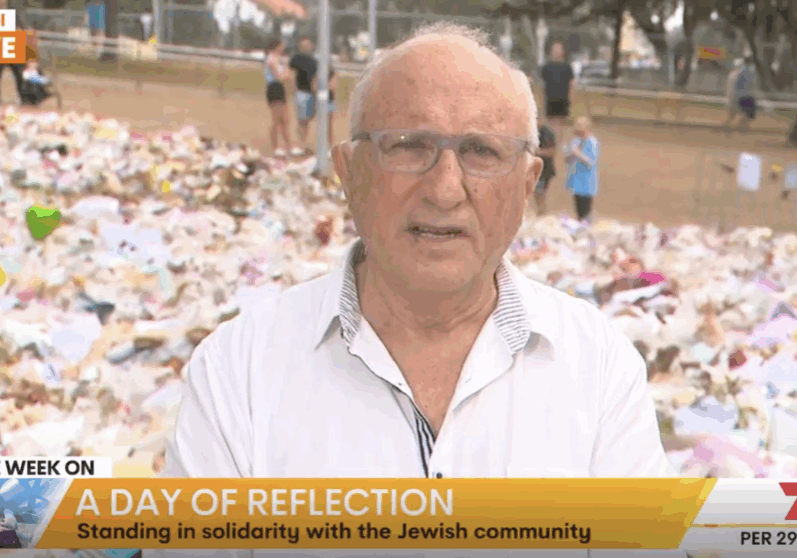
“The writing was on the wall for a number of years”: Colin Rubenstein on Channel 7 Weekend Sunrise
